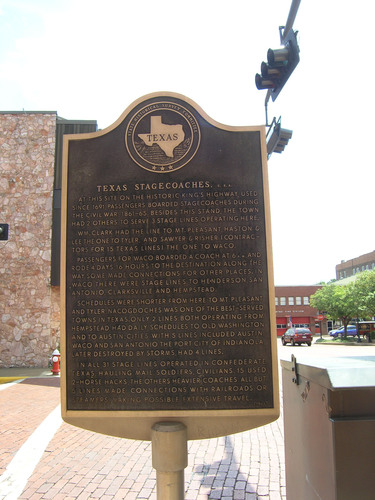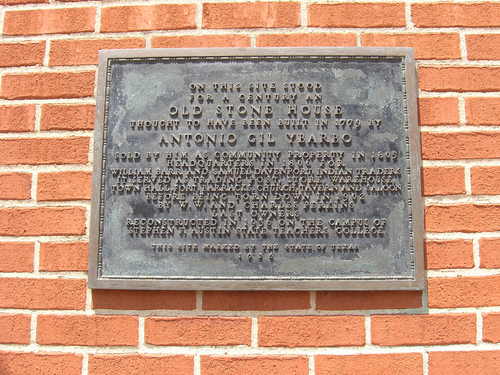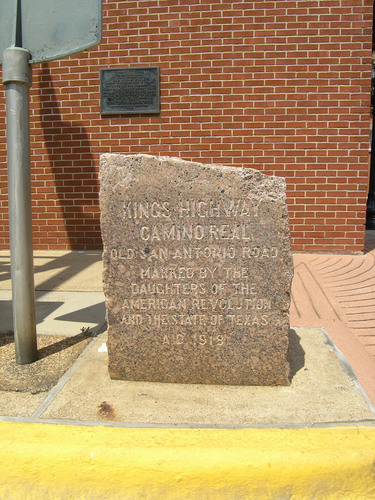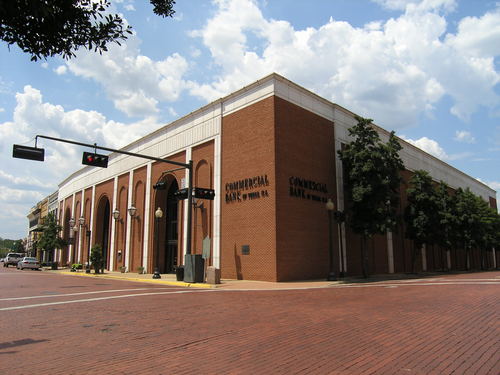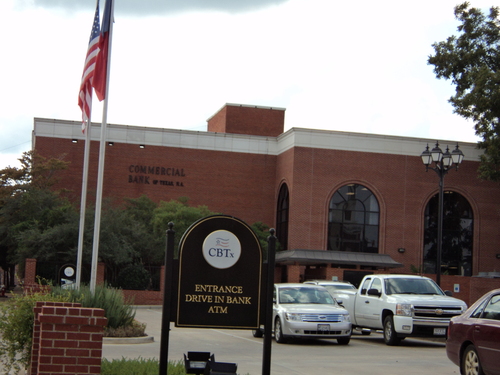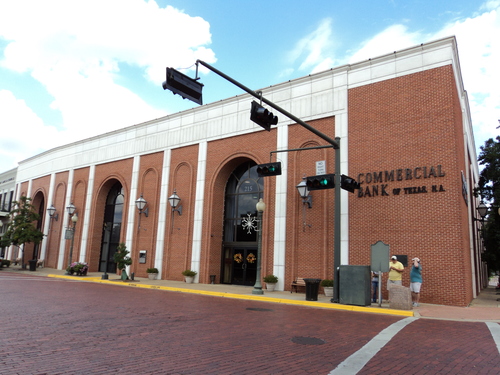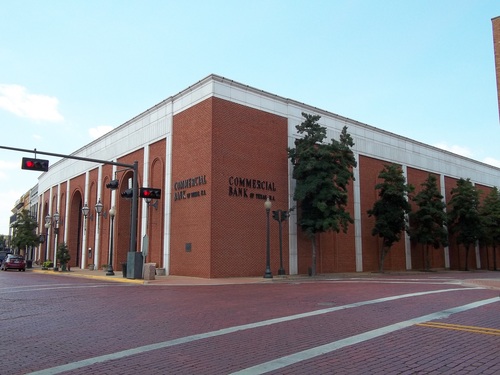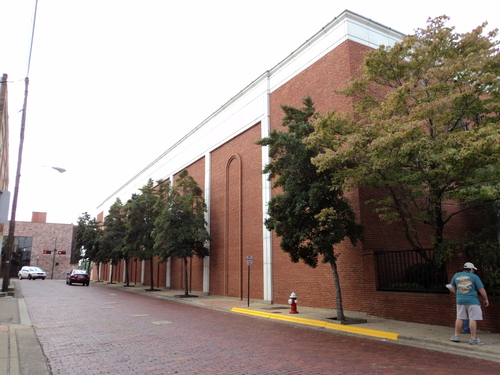215 E. Main Photographs
215 E. Main 2010 Survey Information
215 E. Main 2010 Survey Form215 E. Main 2007 National Register Information
- Address: 215 E. Main
- Name: Commercial Bank of Nacogdoches
- Previous Name: Was site of EA Blount Building (1907), but this was demolished
- Date: 1972
- Type: Contemporary
- Contributing: No
The growth of the bank over time clearly reflected the fortunes of Nacogdoches as a whole. For example, in October 1901, the original amount of deposits totaled $15,580. In only one year, this amount reached $104,620. By 1921, the bank held eight times as much money, with 815,630. The Depression had an effect on the deposits, and the bank showed a loss in the 1930s. However, the war effort and subsequent recovered allowed the bank to prosper, reaching almost $2 million by 1941 ($1,812,940). As Nacogdoches reached the decade of the 1950s, the bank yet again exponential expansion, and by 1950, deposits totaled $6,774,005.
In 1961, after such an intense period of growth, the bank was in dire need of improved facilities. For a short while, it was moved into a temporary home in the Old Herald Building on North Fredonia. Improvements were made to the original building, including the addition of 1,074 feet of floor space to the building lobby (which had originally covered only 884 feet, and was thus expanded to 1,696 feet). In an effort to create a distinctive and luxurious interior, the new building was installed with Swedish green Cippolino marble, walnut paneling, colonial walnut furniture, and heavy piled wool carpeting, and antique-brass chandeliers. Other new features included: an increased supply of lock boxes, coupon booths, customer parking, private offices, a coffee bar, and background music by Magnatronics of New York. Part of the new bank building was a crypt, or time capsule, in which various pieces of Nacogdoches history and memorabilia were to be placed for "prosperity." These took the form of newspaper articles, pictures and recorded radio programs. When the new bank opened in April 1961, it was to great fanfare and large audiences (at least 4,000 people attended the grand opening). The concept behind the 1961 building, decorated by Mrs. Jean Baker and George Keith of Houston, was a return to the "atmosphere of colonial times, when Nacogdoches was a dominant center of culture, education, statesmanship, and leadership in the state. In the architectural style and interior decor, the bank has followed a pattern which fits the atmosphere of the town an (sic) emphasizes the beauty and simple grace which evolved as civilization was carved from the wilderness.The bank has, in effect, taken the Nacogdoches University Building, as the epitome of constructive thinking in the days of Nacogdoches' great period of growth and used that era for its inspiration."
In 1971, about one-half of a square block at East Main and North Fredonia was set for demolition to make room for a new banking facility, patio and garden space. The vast expansion effort included the neighboring lots, once the site of the Swift Brothers and Smith Drug Store, and E.C. Bass Department Store. The demolition of the required area was a massive undertaking expected to take five months. The construction of the new bank was one of the largest construction projects ever to take place in the downtown area. In 1972, the bank occupied its new building, part of which had been the original site of the Old Stone Fort. After a fire in 1984, the bank further expanded to include the property that had been Stripling's Drug Store. A "modem" drive-through motor bank was also built at 805 South Street.
The current building, located on the north side of the plaza principal, remains true to the 1971 design. With classical massing and inflections, the Commercial National Bank references the Post Office and Federal building, which is located directly across Main Street. The exterior of the bank, faced in red brick is divided into nine bays. Three of these bays are marked by expansive arched windows (nonoperable), with alternating blank bays. The overall rhythm reads as a-b-aa-b-aa-b-a, with "b" representing a window bay and "a" representing a blank bay. Each bay is demarcated by abstracted, squared, white pilaster. The blank bays are adorned only with a single-course. Brick ornament suggesting an outline of an arched window with a lantern mounted within. The building is capped by simplified entablature.
215 E. Main 1986 Survey Information
- Address: 215 E. Main
- Name: Commercial National Bank
- Date: 1930-50
- Block: 9
- Lot: 15-A and 17
- Condition: Excellent; west section gutted by fire in 1984 and reconstructed
- Description: 2-story rectangular brick commercial structure with flat roof; 3-bay with colossal romanesque arches framing entry and windows; cast stone pilasters are separated by blind arches; case stone cornice; large stagecoach lamp-style light.
- Significance: Site of Old Stone Fort; RTHL (Recorded Texas Historic Landmark) marker for Old Stone Fort and granite marker for Old San Antonio Road by the Daughters of the American Revolution.
